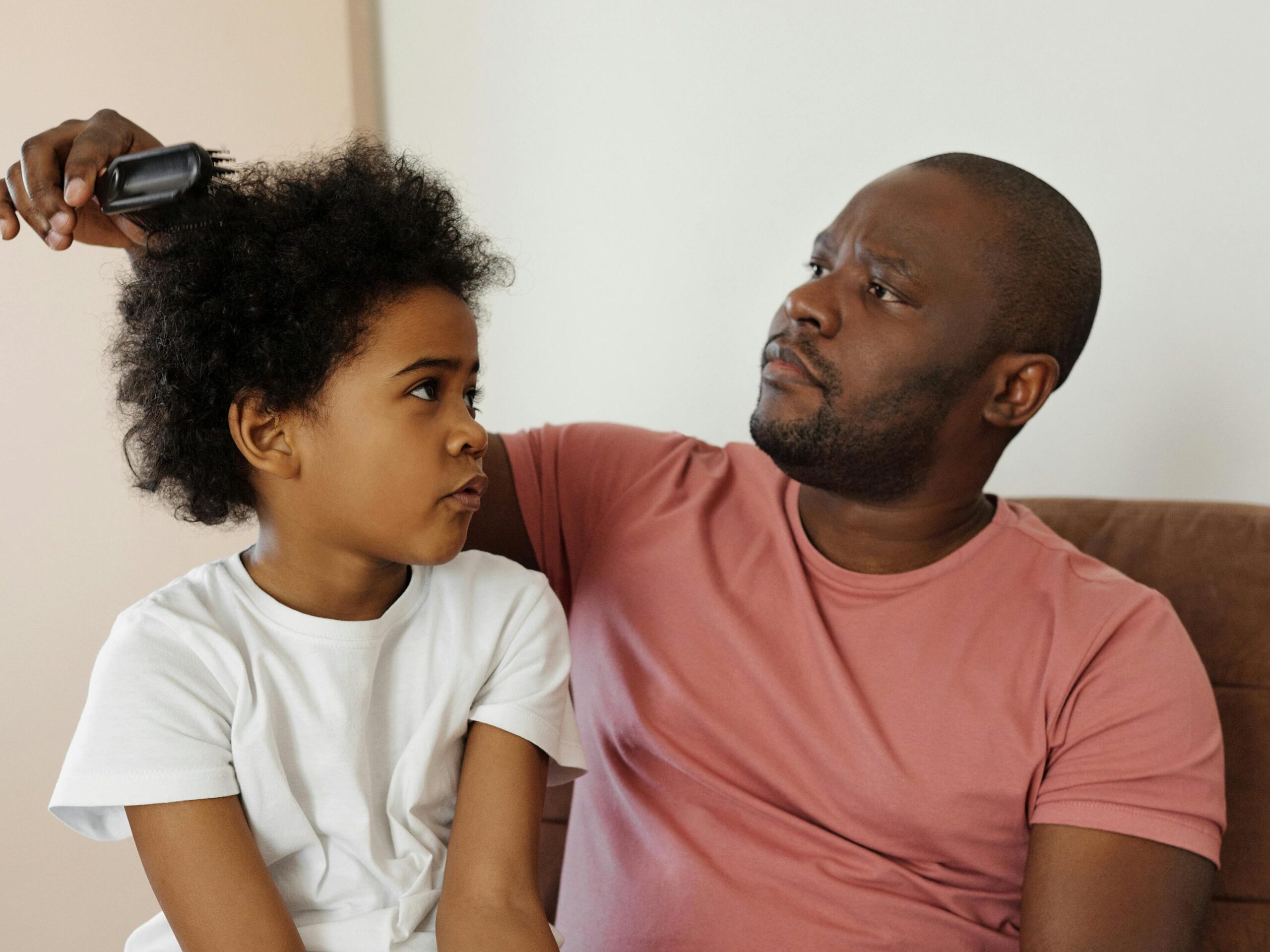The Ultimate Guide to Hair care for Kids: Tips and Techniques for Healthy, Happy Hair
Caring for children’s hair can be challenging task. Kids’ hair can be more prone to tangling and damage than adult hair. To keep child’s hair healthy and happy, early incorporation of hair care routine is necessary. This guide will provide you the best Tips and techniques for healthy and happy hairs.
Understanding Kids’ Hair; Crucial step in Hair care for kids.
Typically, kids have finer and more fragile hair than adults, making gentle care crucial. Factors like genetics, age, and overall health influence the kids’ hair characteristic. Children’s hair varies widely in texture, growth pattern and thickness.
Establishing a Gentle Hair washing Routine
1. Frequency of washing
- The frequency of washing your child’s hair depends on their age, activity level and hair type.
- Infants (0-12 months)- wash hair 1-2 times a week.
- Toddlers (1-3 years)- wash hair 2-3 times a week.
- Older Children (4+ years)- wash hair 2-3 times a week , or more frequently based on their activities.
2. Choosing The Right Shampoo
- Select a mild, tear—free shampoo specially designed for children. Look for the products that are free from harsh chemicals like sulphate, parabens, alcohol or fragrance, which can irritate their scalp and can lead hair damage.
3. Proper washing Technique
- Use lukewarm water to wet your child’s hair
- Pour a small amount of shampoo into your palm, lather it between your hands and gently massage it into the child’s scalp. Avoid scrubbing too hard, it can cause irritation.
- Ensure all the shampoo is wash out completely to prevent residue build-ups.
- For older children or those with longer hair , apply small quantity of lightweight conditioner to the ends of the hair, avoid the scalp. Rinse Thoroughly.
Detangling with Care

- A detangling brush or a wide tooth comb is gentle on the hair and helps minimize damage and breakage.
- Detangle the hairs when damp, as it is more pliable and less prone to breaking. Apply a leave-in-conditioner to hair length; if child’s hair is long or curly.
- Detangle hairs from the ends of their hair and work your way up to the roots. This approach reduces pulling.
- Take your time to detangle the hair gently to avoid causing pain or damage.
Choosing Appropriate Hairstyle

- Choose cute hairstyles that are protective and easy to manage.
- Avoid hairstyles that cause tension on the scalp and hair , causing hair breakage.
- Following are some kind-friendly hairstyle ideas-
- Loose ponytails and buns- these styles keep hair out of the face without causing any tension to the scalp.
- Braids and plaits- it can be great style for long hair but ensure it should not be tight.
- Short haircuts- for easy maintenance, consider short haircut which require minimum styling.
Hydration and Protection of Hair
- To prevent dryness and breakage kids’ hair also need to be moisturized.
- Use a conditioner after shampooing to keep hair hydrated.
- For very dry and curly hairs , use deep conditioners once a week.
- Apply small amount of natural hair oils such as coconut or olive hair oils.
- Leave-in-conditioner and detangling spray help keep hair soft and manageable.
Protecting Hair During Sleep
- Children’s hair can get tangled and damaged while they sleep.
- Use a satin or silk pillowcase to reduce friction and help prevent tangles and breakage.
- Loosely braid or tie long hair before bed.
Sun and Swim Protection
- Exposure to the sun and swimming can damage your child’s hair.
- Hats, caps or scarfs can protect hair from the sun’s harmful UV rays and chlorine.
- Rinse your child’s hair with fresh water immediately after swimming to wash out chlorine and saltwater.
- Apply Leave-in-conditioner with UV protection before going outdoor.
Healthy Diet for Healthy Hair
- A balanced diet rich in essential nutrients supports healthy hair growth.
- A balance diet is necessary in Hair Care for Kids.
- Proteins essential for hair growth, found in eggs, legumes, fish, meat and paneer.
- Iron prevents hair loss, found in leafy greens and fortified foods.
- Omega-3-fatty acid promotes scalp health, found in walnut, flaxseed and fish.
- Vitamin A, C, and E support hair health, found in fruits and vegetables.
Regular Trims
Regular trims help keep your child’s hair healthy by removing split ends. Depending on how quickly hair grows, aim to trim it every 8-12 weeks.
Special Care for Curly and Coily Hair
- Curly and coily hair type requires extra moisture and gentle handling as they are more prone to damage and breakage in Hair Care for Kids.
- Use hydrating shampoos and conditioners specially formulated for curly hair.
- Detangle curly hair when it is wet and coated with conditioner.
- Apply leave-in-conditioner, followed by oil and cream to lock in moisture.
Addressing Common Hair Issues
- Children may have common hair issues like dandruff, lice, or scalp irritation.
- Use a gentle anti-dandruff shampoo to ensure clear and well-moisturized scalp.
- Treat with Over-the-counter lice treatments and use a fine tooth comb to remove them. Washing bed and cloths is necessary to prevent infestation.
- Use soothing products for kids to avoid scalp irritation.
Good Hair Habits
- Teach your child good hair habits from an early stage.
- Encourage them to be gentle while detangling or brushing the hair.
- Show them how to wash their hair correctly, using the right amount of shampoo and conditioner.
- Promote a healthy diet and regular hydration to support overall hair health.
Seeking Professional Help
If you are unsure about how to care for your kid’s hair or if they have any specific hair concern, visit and consult a professional. They can provide personalized advice and treatments for your child’s hair needs.


2 thoughts on “Hair Care for Kids”
Comments are closed.